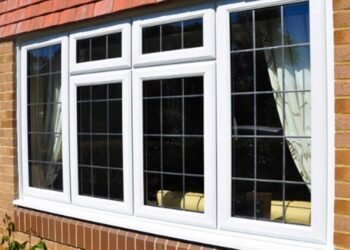In recent years, there has been a growing trend among homeowners and interior designers alike to incorporate tempered glass into various aspects of home décor. This versatile material, produced by a specialized tempered glass manufacturer, offers a number of advantages as well as some drawbacks that should be considered before making a decision to use it in your home. In this comprehensive guide, we will delve into the benefits and drawbacks of using tempered glass in home décor, explore why it is a safe option for furniture, discuss how to clean and maintain tempered glass surfaces, consider the environmental impact of tempered glass manufacturing, and provide some creative ideas and inspiration for designing your home with tempered glass.
Why Tempered Glass is a Safe Option for Furniture
One of the primary reasons homeowners and designers turn to tempered glass is for its safety features. When compared to standard glass, tempered glass is significantly stronger and more durable, making it an ideal choice for furniture and other applications in the home.
Enhanced Strength and Durability
The process of manufacturing tempered glass involves heating the glass to an extremely high temperature and then cooling it rapidly. This process, carried out by a tempered glass manufacturer, results in a material that is up to five times stronger than standard glass. This increased strength means that tempered glass is less likely to break or shatter, making it a safer choice for furniture and other home décor elements.
Safety When Broken
In the event that tempered glass does break, its unique properties cause it to shatter into small, relatively harmless pieces, rather than the large, sharp shards that are characteristic of standard glass. This greatly reduces the risk of injury associated with broken glass, making tempered glass a particularly appealing choice for homes with children or pets.
Resistance to Heat and Scratches
In addition to its enhanced strength and safety features, tempered glass is also more resistant to heat and scratches than standard glass. This makes it an excellent option for use in the kitchen or other areas of the home where high temperatures and potential scratches may be a concern.
How to Clean and Maintain Tempered Glass Surfaces
While tempered glass offers a number of benefits in terms of safety and durability, it does require some special care and maintenance to keep it looking its best. Here are some tips for cleaning and maintaining your tempered glass surfaces.
Cleaning Tempered Glass
To clean tempered glass, simply use a soft, lint-free cloth and a mild, non-abrasive glass cleaner. Spray the cleaner onto the cloth, and then gently wipe the surface of the glass in a circular motion. Avoid using abrasive cleaners or materials, as these can scratch the surface of the glass.
Preventing Scratches
While tempered glass is more resistant to scratches than standard glass, it is still important to take precautions to prevent scratches from occurring. Avoid placing sharp or abrasive objects directly on the surface of the glass, and consider using a protective pad or coaster when placing items on the glass surface.
Regular Maintenance
To keep your tempered glass surfaces looking their best, be sure to clean them regularly to remove fingerprints, smudges, and other marks. Regular maintenance will not only improve the appearance of your tempered glass, but will also help to prevent any buildup of dirt or grime that could potentially damage the surface over time.
Designing Your Home with Tempered Glass: Creative Ideas and Inspiration
Despite the environmental concerns associated with its production, tempered glass remains a popular choice for homeowners and designers due to its versatility and aesthetic appeal. Here are some creative ideas and inspiration for incorporating tempered glass into your home décor.
Tempered Glass Tabletops
One of the most common uses of tempered glass in home décor is for tabletops. A tempered glass tabletop can be an elegant and contemporary addition to any dining room, living room, or office space. In addition to its aesthetic appeal, a tempered glass tabletop is also a practical choice due to its durability and resistance to heat and scratches.
Glass Shelves and Cabinets
Tempered glass can also be used to create stylish and functional shelves, cabinets, and display cases. The transparency of the glass allows light to pass through, creating a bright and open feel, while the strength of tempered glass ensures that your items are securely supported.
Glass Partitions and Room Dividers
In open-concept spaces or areas where privacy is desired, tempered glass partitions and room dividers can be an effective solution. These dividers can be used to create distinct areas within a larger space, while still allowing light to flow through and maintaining a sense of openness.
Glass Staircase Railings
For a contemporary and minimalist look, consider incorporating tempered glass into your staircase design. Glass railings can create a sleek and modern appearance, while also providing safety and support.
In conclusion, tempered glass offers a variety of benefits and drawbacks for use in home décor. Its safety features and durability make it an appealing choice for furniture and other applications, while its environmental impact warrants careful consideration. With proper care and maintenance, tempered glass surfaces can be a beautiful and functional addition to any home.












